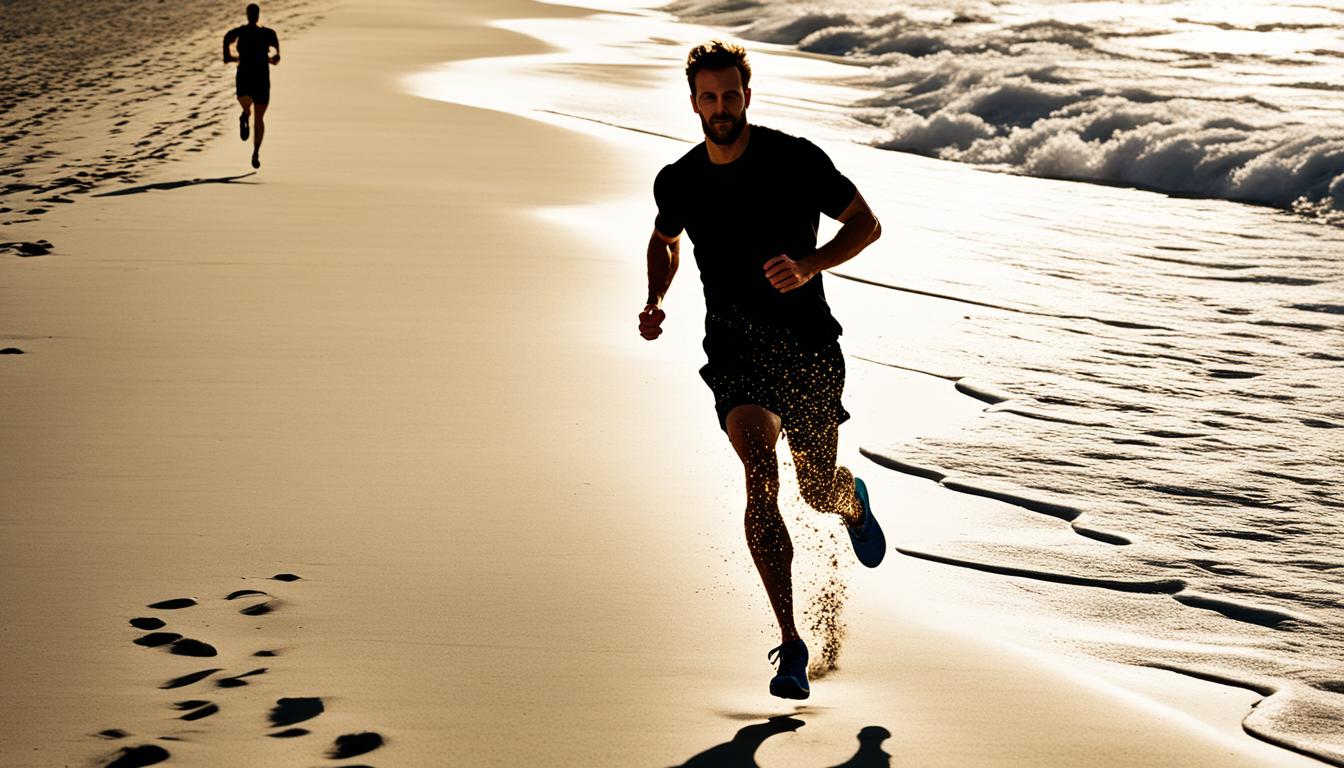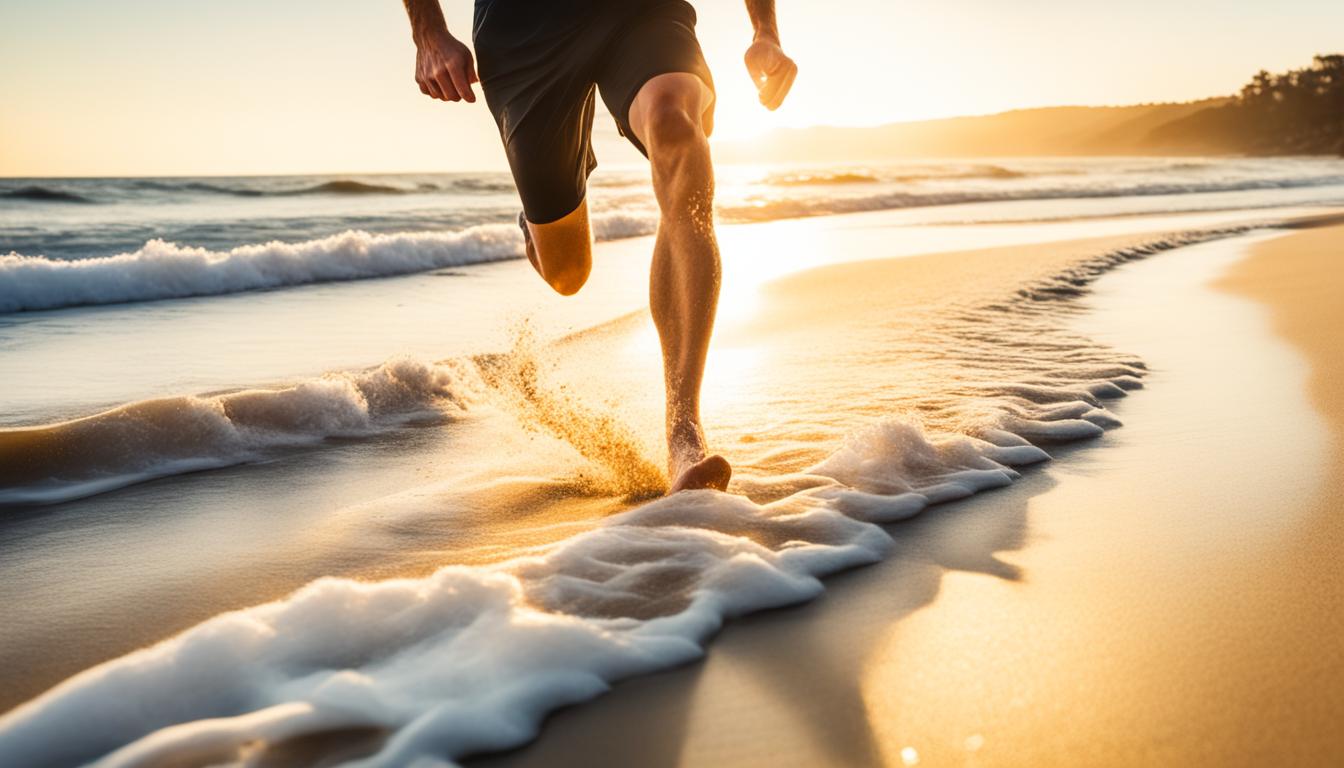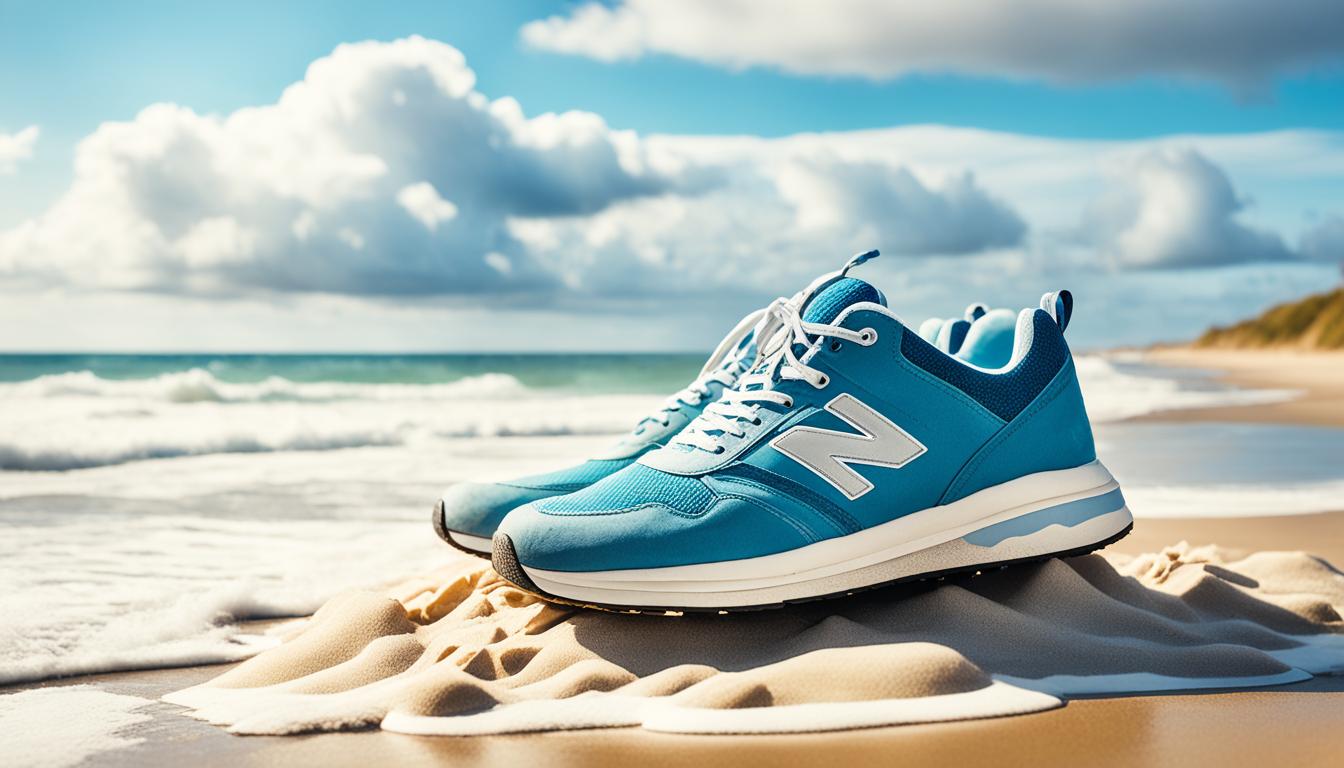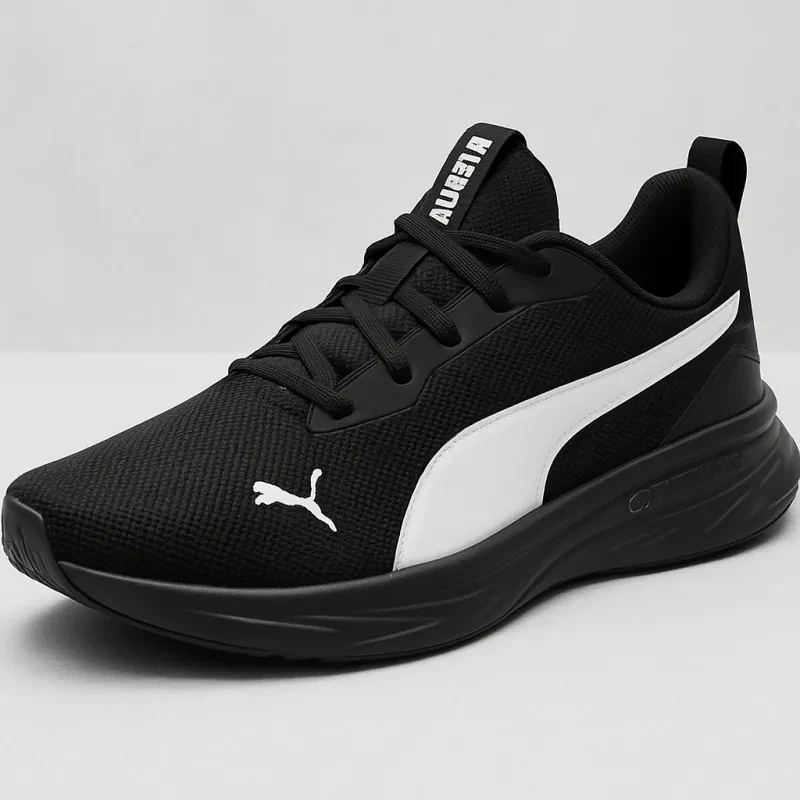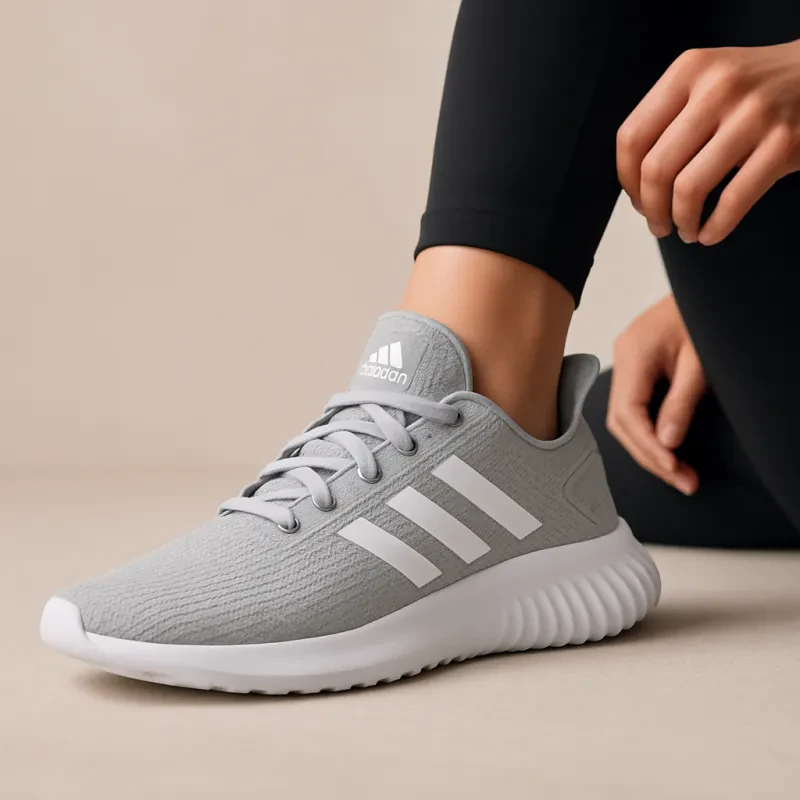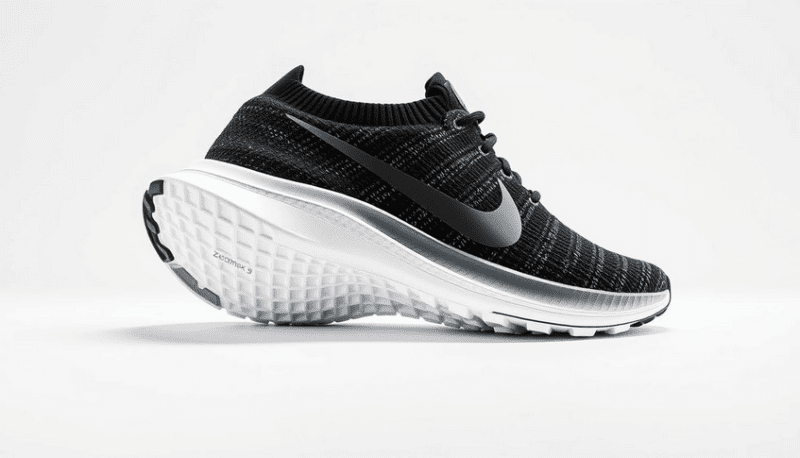Running on the beach means the sun, sand, and calming waves. It's a special experience. Choosing between barefoot or sneakers is a big debate for those who love to run. This article looks into the good and bad of each, helping you pick what's best for you.
The beach is a challenge, whether you're new to running or an old hand. The soft, shifting sand changes how your feet move. This can be good for some muscles but might also lead to injuries. You have to think about staying safe, keeping your feet healthy, and how to run right.
When you start beach running, you'll meet people who love barefoot and others who like minimalist shoes. Each choice has its perks and downsides. The best one for you will depend on what you like, how much you've run before, and your health.
Key Takeaways
- Barefoot running strengthens the feet but go slow to prevent injuries.
- Minimalist shoes can help with stability and foot protection - just pick wisely for the beach.
- Your running style is vital, whether barefoot or in shoes, focusing on how your feet touch the ground.
- Getting used to sand and doing special exercises can make you a better beach runner and lessen risks.
- The decision about barefoot or wearing shoes on the beach depends on what you want, how much you've run, and your health.
Introduction to Beach Running
Running on the beach is captivating and invigorating. It connects runners with nature in a unique way. The sound of waves, beautiful views, and the change from regular running paths attract many.
The Appeal of Running on the Beach
Beach running is a refreshing workout. It works your leg and foot muscles differently than roads or tracks. The soft, uneven sand makes you use more energy. It can strengthen your feet and ankles. This might make you a better and safer runner overall.
Challenges of Running on Sand
The beach's soft, unstable sand is inviting but tricky for runners. You will face more resistance and less grip. This may increase your chance of ankle sprains and other injuries. Be careful of objects or uneven sand that could cause you to fall. Beach running needs careful planning and a slow start to be safe and fun.
Navigating the allure and challenges of beach running is vital. This means choosing to run barefoot, with special shoes, or a mix. By understanding the beach's unique conditions, runners can enjoy its benefits while staying safe.
Barefoot Running on the Beach
Barefoot running on the beach is not just fun; it offers many health benefits. The soft sand helps strengthen your feet muscles and improves how your body senses movement. This improves running form and mechanics, making it feel more natural.
Benefits of Barefoot Beach Running
The most enticing part of beach barefoot running is its grounding benefits. Direct sand contact bolsters foot strength and sharpens your ability to feel your body move. This training leads to better performance and lowers injury risks.
Risks and Precautions for Barefoot Running
Switching to barefoot running demands careful steps to dodge common injuries. It includes cuts, bruises, and overuse sufferings in the feet and legs. Always watch out for hazards on the beach, especially sharp objects.
To have a great time, prepare your feet with strengthening exercises. Slowly getting used to soft sand's unevenness also helps avoid problems. With these steps, you can enjoy a safe and rewarding barefoot beach run.
Sneaker Running on the Beach
Running on the beach with running shoes has many key benefits. They add stability and support to reduce ankle injuries on the shifting sand. Plus, they protect your feet from cuts and sharp objects.
Advantages of Wearing Shoes for Beach Runs
Sneaker running at the beach offers crucial support and protection. Staying balanced on soft, uneven sand is hard, but minimalist running shoes help keep you steady. They also lower body strain by better spreading impact forces.
Shoes also keep feet safe from hidden dangers like sharp rocks or shells. This is especially important for people prone to foot injuries or with extra-sensitive feet.
Choosing the Right Shoes for Beach Running
Picking the right running shoes for the beach is vital. You need a pair that is light, flexes well, and dries fast. This ensures they won’t get too heavy in the sand.
Trail running shoes or light road running shoes are a great choice for beaches. They offer good grip and comfort without being overly bulky. Aim for shoes with durable soles and materials that dry quickly for healthy running biomechanics on the beach.
Sneakers for beach running are a great choice for those looking to incorporate beach fitness into their routine. These shoes are specifically designed to provide good grip and comfort on sandy surfaces while still allowing for natural foot movement. When choosing the perfect pair, opt for shoes with durable soles and materials that dry quickly. This is especially important for maintaining healthy running biomechanics on the beach.
One of the main benefits of wearing sneakers for beach running is the grip they provide. Sandy surfaces can be challenging to navigate, especially when running quickly. The right shoes will have a sturdy and slip-resistant sole that ensures you control your movements. This reduces the risk of slips and falls, allowing you to focus on your beach workout without worry.
Comfort is another crucial aspect to consider when selecting shoes for beach running. Look for sneakers that provide ample cushioning while still maintaining a lightweight feel. This will help minimize strain on your feet and joints, allowing you to enjoy your beach run without discomfort. Additionally, shoes made from breathable materials will help prevent excessive sweating and keep your feet cool during your workout.
Lastly, it is essential to consider your runner's foot health when choosing the right shoes for beach running. Opt for shoes that offer proper arch support and a comfortable fit. This will help prevent any potential foot injuries or issues from running on uneven sandy terrain. Additionally, ensure that the shoes dry quickly to avoid any discomfort caused by soggy or waterlogged shoes.
In conclusion, choosing the right sneakers for beach running can greatly enhance your beach fitness experience while keeping your runner's foot health intact. Look for shoes that provide good grip, comfort, and durability. With the right pair of shoes, you can confidently embark on your beach runs, enjoying the beautiful scenery and reaping the benefits of beach fitness.
Barefoot or Sneaker running on the beach which is better
Deciding between barefoot or sneaker running on the beach comes down to your goals, experience, and health. Think about if you're used to each way, and if you get hurt easily. Consider the beach conditions like the sand's softness and how flat the area is. Also, look at how you run and move (your biomechanics).
Factors to Consider When Deciding
If you're into minimalist running and have healthy feet, barefoot running on the beach might be good for you. It can make your foot muscles stronger and improve how you feel those movements (your proprioception). But, if you've had foot or ankle injuries, you might like the extra grip and support from running shoes on the uneven sand.
Transitioning Between Barefoot and Sneaker Running
You can also mix it up, going from barefoot to sneakers or vice versa. Starting with one and adding the other as you get more comfortable is a choice. This mix approach lets you enjoy the best of both worlds, keeping you safe. It's all about what feels right for you, changing your running style and what you wear slowly. That way, you can have the best beach running time that boosts your fitness without risking injuries.
Technique and Form for Beach Running
Whether you go barefoot or wear shoes, having the right running technique is key for a good beach run. Running on soft, uneven sand means you need to take shorter steps. This keeps you steady and moving efficiently. It's also important to use your core and to strengthen your feet and ankles. This makes it easier to handle the beach's tough surface.
Be aware of how your feet land on the sand. You might naturally land on your forefoot or midfoot which is good. It helps spread out the force when your foot hits the ground. Doing special sand exercises, like resistance training and plyometrics, can make you even stronger and more stable. This will help you run better on sand and keep your body moving the right way.
If you focus on the right natural running form and do the right foot exercises, you'll love running on the beach. It offers benefits you can't get on a regular run. And it's a chance to enjoy nature while getting fit. Running on the beach can be great for any runner, from beginners to pros.
Safety Tips for Beach Running
Running on the beach requires some thought for safety. You want to have fun without getting hurt. It's crucial to prepare well for the beach. Runners need to think about how the sand feels under their feet and be aware of any danger.
Preparing for the Beach Environment
Before you start your beach run, look around for anything that might cut you or trip you up. You should slow down and wear the right kind of running shoes. This helps you run on the sand without hurting yourself. Also, working on your foot and leg strength can make a big difference. It helps you run more naturally and reduces the chance of getting hurt.
Staying Hydrated and Protected
Running on the beach is tough because of the sun and the sand. Remember to drink enough water and protect your skin. Using sunscreen is a must. It helps you stay healthy and perform your best. Including some barefoot running in your routine is great. It keeps your stride natural and has many benefits.
Conclusion
When it comes to choosing between barefoot and sneaker running on the beach, it depends on what you aim for and how your body is. Both ways of running have their own good sides. For example, running barefoot can make your feet stronger. It also helps with balance and protection.
If you prefer a more natural approach, barefoot on the beach is great. It can make your running style better and boost how aware you are of your body. But, remember to start slow to prevent any foot pain or injuries. Make sure to watch out for sharp stuff on the sand. If you opt for shoes, something like the New Balance Fresh Foam Hierro v6 Trail Running Shoes can keep you stable on the soft ground.
Knowing the pros and cons of each method, plus using good techniques and staying safe, will help you enjoy running on the beach. The choice of running with sneakers or barefoot is really up to you. Listen to what your body tells you and change your workout as needed.
FAQ
What are the benefits of running on the beach?
Running on the beach is scenic and soothing. You hear the waves and see the beautiful scenery. Plus, the soft sand acts as a natural, gentle surface. This can make your foot muscles stronger and improve how you sense where your foot is.
What are the challenges of running on sand?
Sand offers a soft, uneven surface. This adds extra resistance, more energy use, and uses different leg and foot muscles. It also can make you less stable, leading to more ankle sprain risks. And you might run into obstacles or have to deal with bumpy areas.
What are the benefits of barefoot running on the beach?
Barefoot running on the beach can improve how you run and the strength of your foot muscles. It might feel more natural. But, starting barefoot running needs to be done carefully. You need to go step by step to avoid getting hurt.
What are the advantages of wearing shoes for beach running?
Shoes give you more support and stability. This can lower the chance of getting hurt, like an ankle sprain, on the uneven sand. They also protect your feet from sharp things and cuts.
How do I choose the right shoes for beach running?
The best shoes for beach running are light, bendy, and water-friendly. They should not gather too much sand. Trail running or minimalist shoes are good choices for the beach.
How do I transition between barefoot and sneaker running on the beach?
You can switch between barefoot and wearing shoes on the beach. Start with one and add the other bit by bit. This mix can be the best of both worlds without too much risk.
What are some safety tips for beach running?
Before you run, check the beach for dangers. Stay hydrated and protect your skin from the sun. Also, do exercises that help with the sand. And start slow to get used to running on this soft ground.

